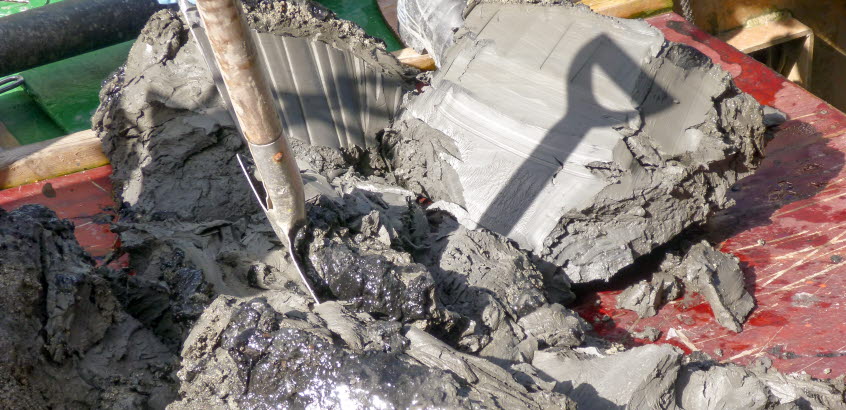 Photo: Hjördis Löfroth/SGI
Photo: Hjördis Löfroth/SGI
SGI strengthens research into contaminated sediments
The Swedish government has launched a wide-ranging initiative dealing with marine environment issues. As part of this initiative, SGI (Swedish Geotechnical Institute) has been granted extra funding of five million kronor from 2018, presenting it with the opportunity to reinforce applied research and development and the dissemination of knowledge and data related to contaminated sediments and fibre-rich sediments.
The emphasis is on projects involving investigation and measures linked to contamination. If an environment is to work effectively, a range of functions are needed in sediments/lake beds/sea beds that contribute to clean water and biodiversity, and at the same time assure food supply, ecosystem services and blue growth. Contaminated sediments, fibre banks and fibre-rich sediments are major environmental problems.
In an effort to address the challenges presented by contaminated areas, SGI has worked for many years on research and development, the dissemination of know-how and data, and the provision of support to other agencies and municipal authorities. SGI has over an extended period conducted research and provided support to the other bodies working in the field of contaminated sediments and fibre-rich sediments. This has become an integral part of its overall remit of tackling the problem of contaminated areas – a remit which from 2018 is strengthened even further.
Working on various aspects
A number of other public bodies are working on various aspects of contaminated sediments, and the interagency collaboration that is already taking place will assume greater importance in the future. In addition to SGI, other public-sector organisations that are collaborating in the sediment field are the Swedish Environmental Protection Agency, the Swedish Agency for Marine and Water Management, the Geological Survey of Sweden, and the county administrative boards. These organisations have put forward a set of common objectives for 2022 that can be summarised in the vision: Working to bring about a cleaner aquatic environment through collaboration, greater knowledge, and effective measures to deal with contaminated sediment areas.
During the coming years, SGI will contribute to national research and development focusing on contaminated sediments and fibre-rich sediments that is far-reaching, needs-based and applicable in practice. This will take place partly through SGI’s own research, and partly through funding bodies, research institutes and other public agencies being made aware of the importance of research in this field, as well as gaps in knowledge and key research requirements. The research results will be used in practice in publications, guidelines, investigations and remediation measures, and new techniques and working methods will be produced, tested and evaluated continuously.
Guidelines and training programmes
Based on the needs of stakeholders (problem-owners, authorities, consultants, contractors et cetera), SGI will contribute with guidelines and training programmes aimed at implementing surveys and measures related to contaminated sediments and fibre-rich sediments, and by doing so it will help improve the aquatic environment. These guidelines and training programmes will be produced in partnership with other agencies and organisations. SGI aims to disseminate knowledge to all stakeholders, and it has put together a special range of courses directed at county administrative boards and municipal authorities.
SGI has concluded its involvement in the research project Treasure. The project was aimed at producing new methods for assessing the potential spread of contaminants from strongly contaminated sediments (fibre banks). At the same time, it identified the areas that are in greatest need of decontamination, and produced scientifically based recommendations regarding decontamination methods that are suited to purpose. SGI has also conducted a research project focusing on the spread of TBT to and from sediments at boat storage yards. In addition, SGI has made an inventory of knowledge requirements and research groups working in the sediment field. A knowledge development project aimed at producing guidelines for risk assessment of contaminated sediments is due to be concluded in 2022.
Fibre banks and fibre-rich sediments
Unregulated discharge from pulp and paper factories have resulted in deposits along the Swedish coast that contain cellulose fibres and wood chips, contaminated with dioxins, PCBs, DDx, PAHs, Hg, among other things. These relatively thick cellulose rich deposits (so called fibre banks) are often found in shallow coastal areas close to the pulp and paper mills. Residues of cellulose fibres have also been found on the deeper sea bed outside the fibre banks, mixed with natural sediments (so called fibre-rich sediments).

